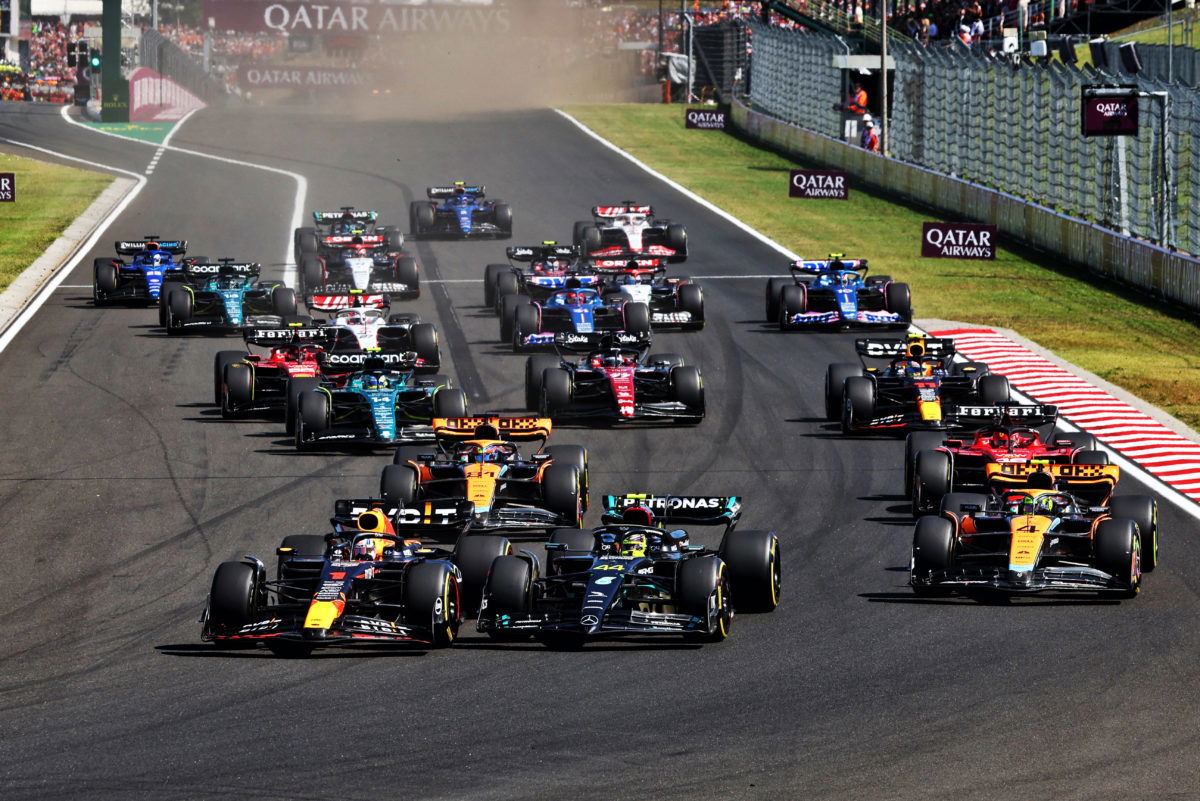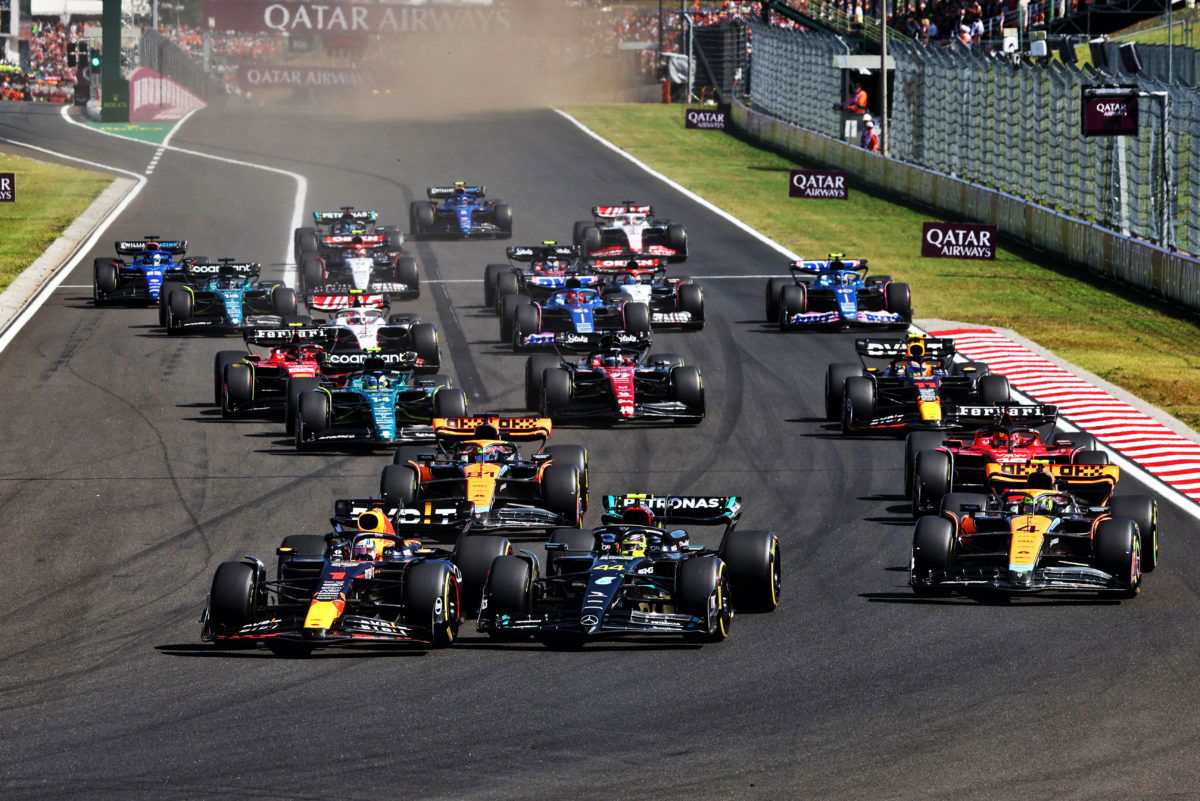

A visit to the recent Austrian Grand Prix served to reaffirm several observations I have about the current state of Formula 1.
There’s no doubt that F1 is currently booming in terms of profile and attendances. The ‘theatre’ around pretty much every event is very apparent and, whilst some aspects of this might not be to everyone’s taste, it certainly appears to appeal to the newer fan base.
However, I don’t feel that the racing itself is that great much of the time. For sure a late Safety Car, like that at the British GP, can certainly make a race come to life and give us a ripper show. But often there’s not that much real action after Lap 1 and the Hungarian GP at the weekend was positively soporific.
I’m the first person to acknowledge that not every race is going to be a great one. That’s the nature of any sport. Some games will be nail biters and others much less so.
But I do feel that a part of the problem is that F1 is becoming a victim of the sheer excellence of the teams in perfecting their performances to such a level that the show suffers as a consequence of the elimination of errors.
Some fixes, like the sheer size of the current cars for instance, take a long time to feed through even when they’re agreed in the first place. Make the cars physically smaller and that will create more potential for side-by-side racing, like in Formula 2 and 3.
However, to spice things up in the shorter term, i.e. 2024, I’d make three changes:
Firstly, carry through with the planned tyre warmer ban for next year. It appears that some teams and drivers are pushing back on this, but cold tyres should not only make the out laps more difficult but should also change strategic approaches to races.
Some folk say that it will be dangerous. However, it would only bring F1 into line with pretty much every other category in the world as well as being environmentally far more sound. Recent events in the World Endurance Championship have been held up by some as examples of the need for warmers, but Pirelli already has the capacity to take appropriate compounds to each event in F1 to negate extreme temperature fluctuations from venue to venue.
Moreover, there are already regular instances when teams send cars to the end of pit lane on slick tyres to await the start of a qualifying session especially when the weather is changeable. Sitting in cool conditions for three or four minutes will cause much of whatever heat was in the tyres to dissipate. They do this voluntarily to gain track position.
So, it doesn’t appear to make sense to object to the banning of warmers on the basis of safety if teams are happy to go out with cooler tyres in such conditions and also when Formula 2 and F3 (with, by definition, less experienced drivers) run without blankets on the same brand of tyre at the same events.
Oh, and remember, F1 ran very well for decades without tyre blankets … teams started to use them for performance, not safety.
Secondly, drastically reduce the number of personnel allowed to participate in a pit stop. There are regularly 20 people involved in a typical stop! There’s simply no need for such excess. At the same time, the Formula 2 pit stops look positively amateurish with so few people and also the use of front and rear jacks with the cars wobbling away on them.
The solution lies between the two.
I’d mandate the use of air jacks on the cars so that would cut a net three people immediately as each team currently uses a jack man plus a backup at each end of the car. Properly located air jacks should also get rid of the car “steadier” employed by everyone as well. They’d also make those inevitable front wing changes slicker and easier with fewer people.
Some will say that it’s difficult to fit air jacks to the current cars and that they would increase weight. Both points are true, but if the teams saw a performance increase in them then they’d have them in place for the next race! Everything is possible.
Then cut the wheel people from three per wheel to two. And finally, if a team wants to make wing adjustments, or any other changes, then they would be carried out by the wheel crews. It would be up to the teams to decide how to deploy ten people, including the air jack man and car controller, across the stop.
The teams will still do a great job of working around these rules, but the stops would be slower and more susceptible to errors from time to time.
As with my comments on F1 track limits recently, I think Formula 1 could learn from Supercars regarding the limitation of pit crew personnel. A good Supercars pit stop for two tyres (with two people per tyre, so comparable with my proposal for F1) is not much slower than an F1 stop and, frankly, equally good to watch in my opinion.
Whilst we’re at it, F1 should also insist that the outer wheel guns are removed from pit lane, and stored on the boom/rig as per Supercars, instead of being left on the ground throughout a race. Surely any decent risk assessment of pit lane would establish in a heartbeat that having them left in the lane, and often with crew standing there to hold the lines back from the entry or exit line of a neighbouring pit bay, is undesirable?
Finally, DRS (the Drag Reduction System) should be changed in the way it is deployed in my opinion. Currently, the system is allowed to be used any time (within the designated zones of course) during practice and qualifying and then, during races, when a car is within a second of a preceding car.
I would ban the use of DRS during qualifying.
Allow its use in practice to ensure it’s working and to do race preparation, but why on earth is it used in qualifying? If everyone cannot use it then it’s the same for all and it only exists anyway to assist with overtaking which isn’t relevant in qualifying.
And then, during a race, instead of unlimited use when a car is in the zone and within a second of the car in front, I’d allow it’s unlimited use by each driver, regardless of car position relative to another, up to a maximum time limit for the race.
So, for instance, the time limit might be 200 seconds for a given race. But the driver could choose to use it any time he or she chose during the race. It would, in other words, operate as a push-to-pass system which would allow defence as well as attack.
When you’ve used it up then it’s gone. Those readers who follow IndyCar will know exactly what I mean (their system is a power boost but the effect is similar) and the wheel-to-wheel racing in that series is pretty good.
Of course, as I know very well having been in Team Land for so long, teams will habitually push back on almost any changes. When you’re at the coalface it is often difficult to see the wood from the trees. So, don’t hold your breath waiting for the type of changes I’m advocating! But it’s fun to speculate.





















Discussion about this post